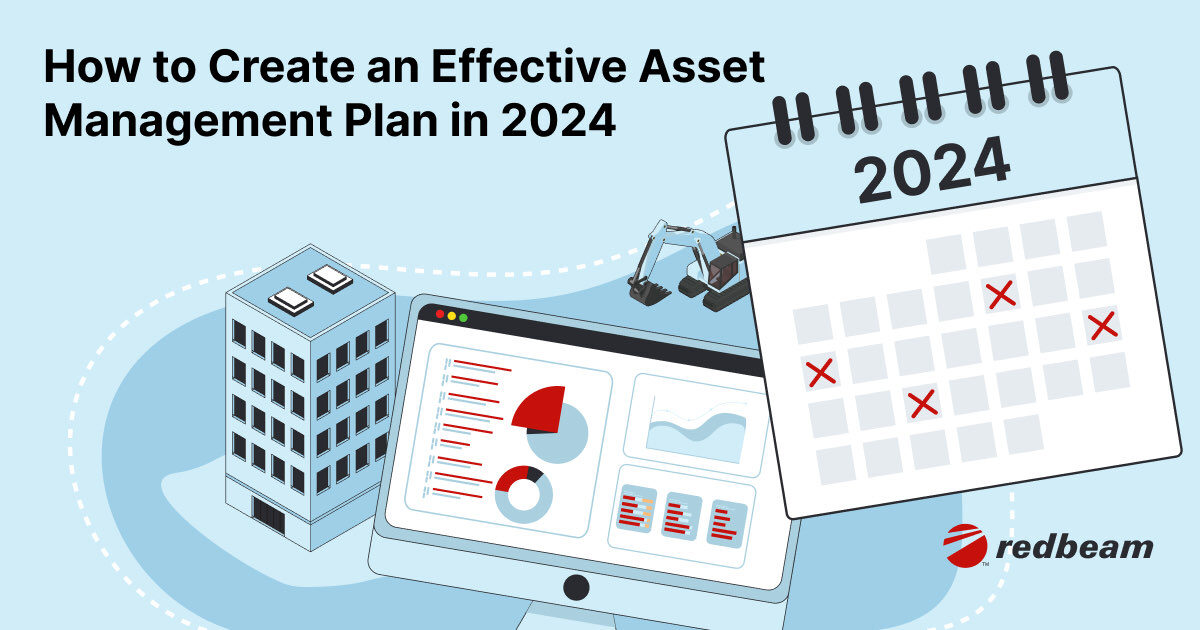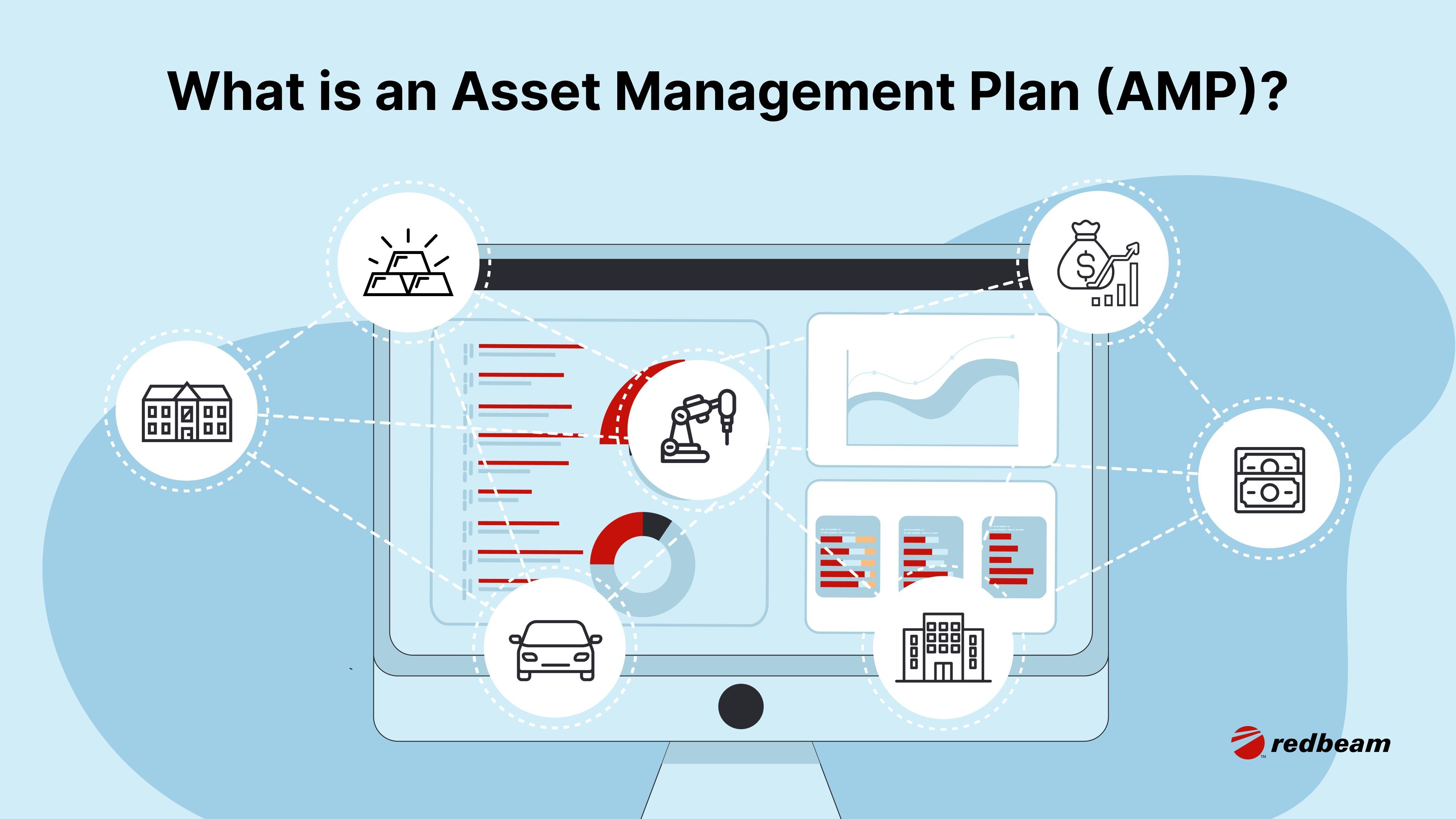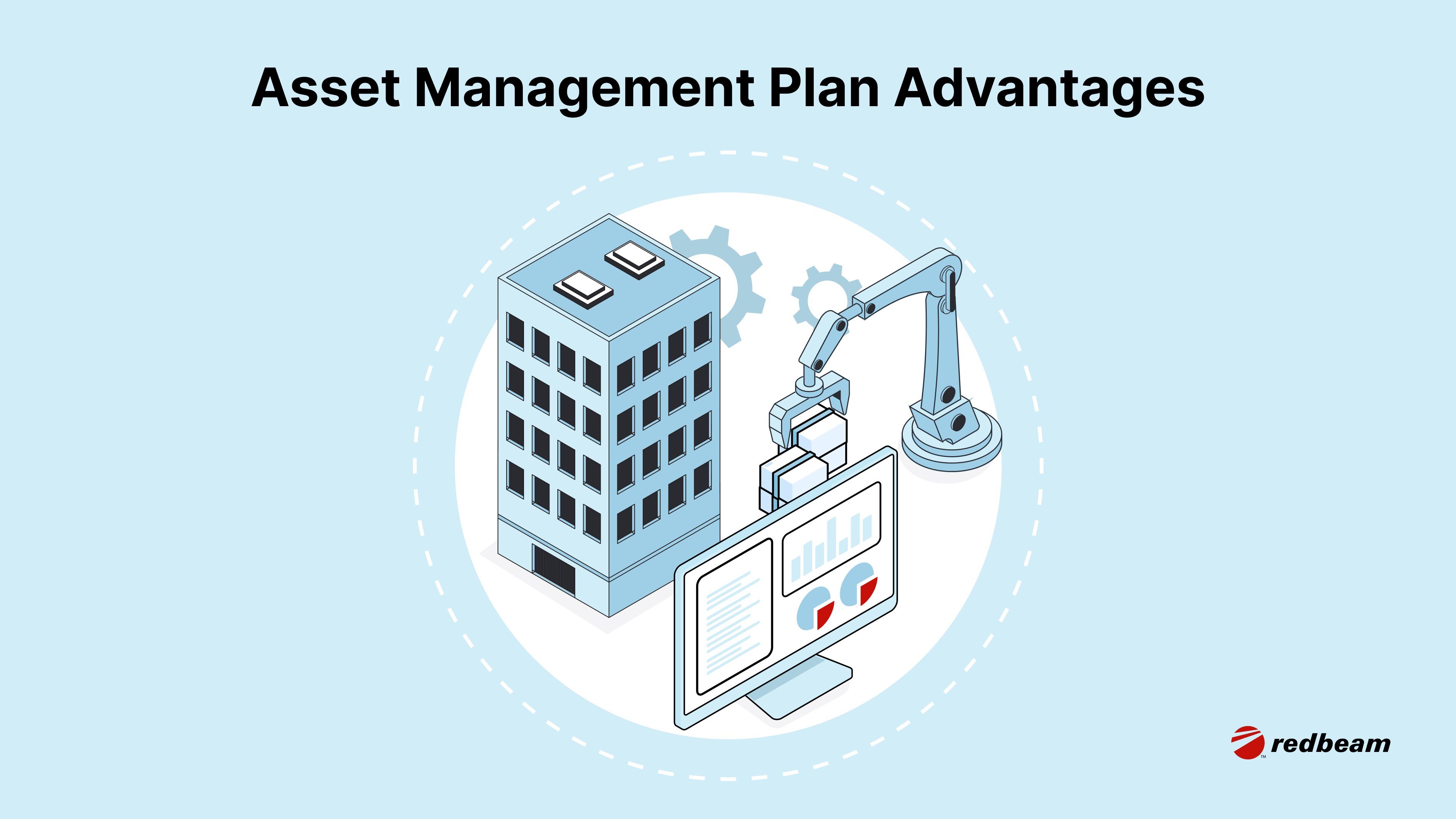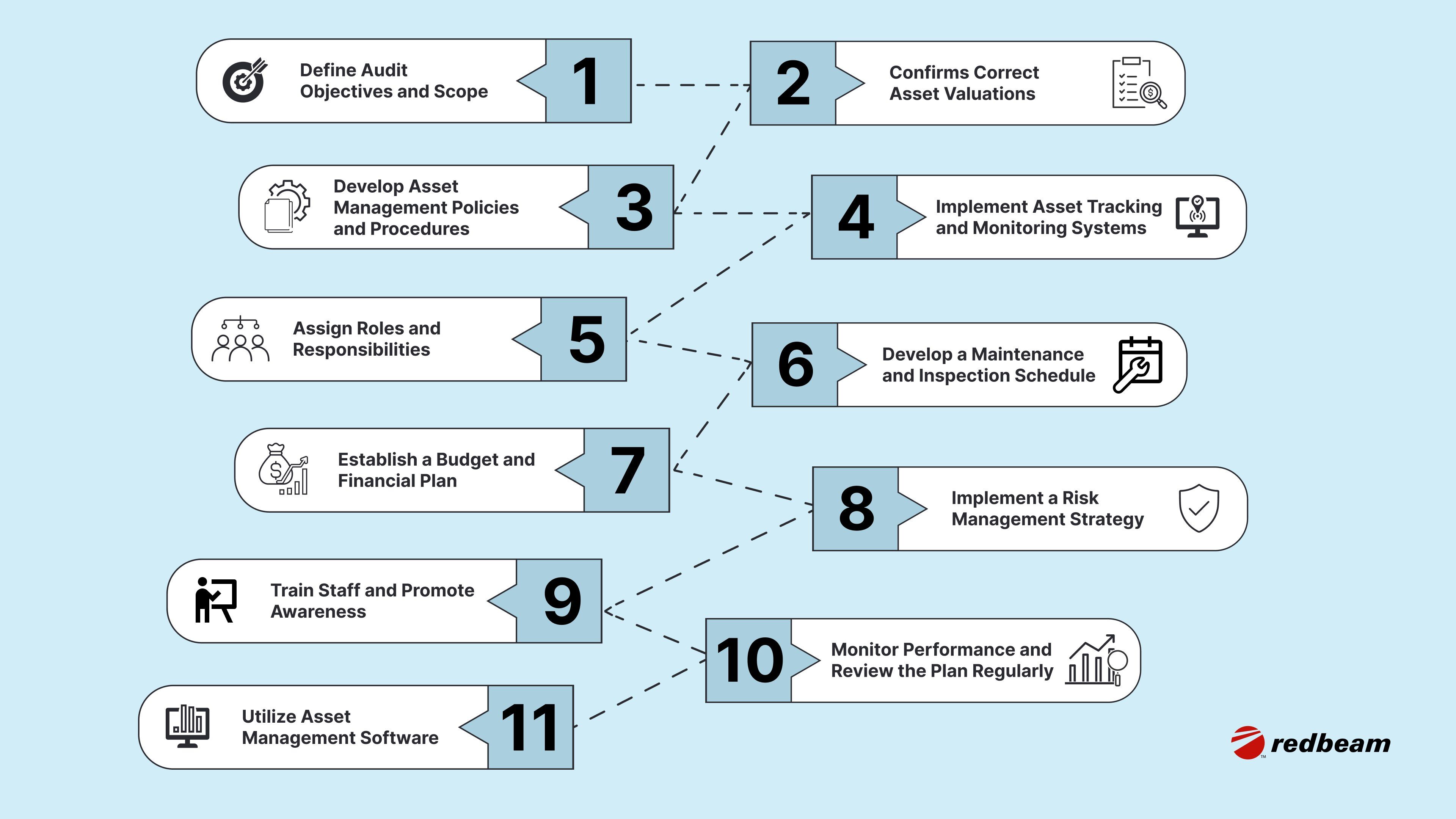How To Create an Effective Asset Management Plan in 2024

Struggling with disorganized assets, unexpected downtime, and inefficient resource allocation can significantly hinder your organization's performance. These issues often stem from a lack of a cohesive asset management plan. By establishing a well-structured asset management plan, you can mitigate these problems, ensuring that your assets are optimally managed and utilized. This guide will lead you through the critical steps and best practices for creating an effective asset management plan in 2024, helping you set clear objectives, adopt best practices, and integrate the latest technology into your strategy. Ready to transform your asset management approach? Dive into this guide to learn how to create an effective asset management plan that drives success.
Main Takeaways From This Article:
- Effective asset management plans are essential for optimizing the systematic process, asset utilization, lifecycle management, reducing costs, and enhancing decision-making.
- Integrating advanced technologies like IoT and AI can significantly improve the efficiency of asset planning, tracking, monitoring, life cycle costs, and proactive management.
- An effective, cost-effective management plan involves clear goal setting, a comprehensive asset inventory of physical assets, infrastructure assets, and various other assets, and well-defined policies and procedures.
- Regular performance monitoring, staff training, and the use of specialized software are critical for maintaining and improving asset management plans.
- RedBeam offers cutting-edge solutions that incorporate technologies, ensuring a future-proof and scalable strategy.
What Is an Asset Management Plan (AMP)?

An Asset Management Plan (AMP) is a strategic blueprint designed to effectively manage a company’s assets. It involves monitoring, maintaining, upgrading, and replacing assets cost-effectively. By setting clear objectives and utilizing advanced technologies like IoT and AI, an AMP ensures optimal asset utilization, enhances decision-making, and aligns with business growth and technological advancements.
Advantages of Asset Management Plans

Here are the advantages of asset management plans:
- Optimizes Asset Utilization: Businesses can achieve optimal asset utilization by leveraging IoT technology, enabling monitoring and identification of underused resources. This helps defer capital investments and maximizes efficiency, ensuring every asset is used to its fullest potential without downtime.
- Reduces Operational Costs: By incorporating IoT-driven asset management, businesses can significantly cut operational expenses. The ability to monitor assets reduces the need for on-site inspections and maintenance visits, lowering labor costs. Furthermore, preventing asset theft and misplacement ensures resources are used efficiently and cost-effectively.
- Improves Decision Making: Accurate data from your assets makes decisions more informed and strategic, leading to optimized asset allocation and utilization. Advanced technologies like AI and IoT provide accurate insights, allowing for proactive adjustments and improved long-term planning, enhancing overall organizational efficiency and effectiveness.
- Enhances Compliance: An effective asset management plan ensures compliance with regulatory requirements and industry standards. Keeping accurate records and maintaining scheduled inspections minimizes legal risks and avoids costly fines. Enhancing compliance protects your organization and builds trust with stakeholders and clients.
- Increases Asset Lifespan: Regular maintenance and timely upgrades extend the useful life of assets. Proactively addressing wear and tear issues can avoid premature replacements and downtime, ultimately saving costs. Incorporating advanced technologies like predictive maintenance helps identify potential failures before they occur, maximizing asset efficiency and longevity.
- Facilitates Risk Management: Proactively managing risks associated with assets helps mitigate potential losses and disruptions. An effective AMP identifies and addresses vulnerabilities, prepares contingencies, and ensures compliance with safety standards, securing the organization against unexpected challenges. This fosters resilience and enhances operational stability, which is critical for sustaining long-term growth.
- Streamlines Processes: An effective AMP eliminates inefficiencies and reduces redundancies by automating and standardizing operations. This ensures smoother processes and faster response times. Streamlined procedures maximize productivity and align every component of the asset lifecycle , leading to better overall performance and a more agile organization.
- Supports Financial Planning: Gaining a holistic view of all assets, valuations, and lifecycles offers a solid foundation for financial planning. It helps budget, forecast, and align financial strategies with long-term business goals. This clarity ensures more informed financial decisions, enhancing overall fiscal health.
How To Build an Effective Asset Management Plan Step-By-Step

Building an effective Asset Management Plan (AMP) requires methodical steps to ensure accurate tracking , optimal utilization, and risk management.
Here, we break down each step, from defining objectives to utilizing advanced software to streamline processes and enhance efficiencies.
1. Define Asset Management Objectives and Goals
Setting clear objectives and goals for your asset management plan (AMP) is fundamental to success. By understanding your aim, you can effectively tailor your strategies to meet these needs. Consider the following:
- Identify Key Assets: Determine which assets are most critical to your operations.
- Set Performance Benchmarks: Establish metrics to gauge asset performance.
- Align with Business Goals: Ensure your AMP supports overall company objectives.
- Focus on Sustainability: Incorporate long-term sustainability into your goals.
2. Conduct a Complete Asset Inventory Audit
A thorough asset inventory audit is essential for understanding your organization's assets and current status. This step involves identifying and documenting all physical and digital assets, ensuring nothing is overlooked. Here are some key steps:
- Document Assets: Record details like make, model, and serial numbers.
- Classify Assets: Categorize assets based on type, location, and usage.
- Verify Ownership: Confirm which departments or individuals are responsible.
- Assess Condition: Evaluate the current state and functionality.
3. Develop Asset Management Policies and Procedures
Developing comprehensive asset management policies and procedures is critical in ensuring efficient and effective utilization of your assets. These guidelines provide a solid framework for consistently managing assets across the organization and serve as an essential reference for your team. Here's how:
- Define Clear Asset Policies: Establish clear policies that outline each asset's ownership, accountability, and use to avoid ambiguity.
- Standardize Procedures: Develop standardized asset tracking, maintenance, and disposal procedures to ensure uniformity across all departments.
- Implement Compliance Measures: Ensure your policies align with regulatory requirements and industry standards to maintain compliance.
- Regularly Update and Review: Review your asset management policies to incorporate new technologies and evolving business needs.
- Document All Processes: Maintain comprehensive documentation of all asset management processes to facilitate new employee training and onboarding.
4. Implement Asset Tracking and Monitoring Systems
Implementing asset tracking and monitoring systems gives you an accurate view of your assets' locations, conditions, and utilization rates. Leveraging advanced technologies like IoT and AI will provide precise data that enhances operational efficiency and decision-making. Here's how:
- Choose The Right Technology: Assess your specific needs to select appropriate IoT devices and tracking methods that suit your organizational requirements.
- Integrate with Existing Systems: Ensure your asset tracking system seamlessly integrates with your existing infrastructure and software solutions for unified data management.
- Enhance Data Accuracy: Utilize automated data capturing to minimize errors associated with manual entry, thus boosting the reliability of your asset information.
- Accurate Monitoring: Implement monitoring systems to continuously monitor asset conditions and locations, allowing prompt response to anomalies or issues.
- Facilitate Easy Access: Deploy user-friendly platforms that provide stakeholders with accessible and comprehensible data, ensuring effective asset management.
- Security Measures: Establish robust cybersecurity protocols to protect sensitive asset tracking and monitoring data.
- Scalability: Choose a scalable system that can grow with your business needs, accommodating additional assets and functionalities as required.
5. Assign Roles and Responsibilities
Assigning roles and responsibilities is critical in ensuring your asset management plan operates smoothly. Clear delineation of tasks helps prevent overlap, reduces confusion, and enhances accountability among team members. Here's how:
- Define Key Roles: Identify essential positions such as Asset Manager, Maintenance Supervisor, and IT Support.
- Allocate Responsibilities: Assign specific duties to each role, ensuring everyone understands their tasks and objectives.
- Encourage Collaboration: Promote teamwork among departments to foster efficient communication and problem-solving.
- Set Performance Metrics: Establish clear criteria to measure the effectiveness and efficiency of each role.
6. Develop a Maintenance and Inspection Schedule
Regular and preventative maintenance and routine inspections are paramount to prolonging the life and performance of your assets. By developing a well-structured schedule, you can preemptively address potential issues and ensure continuous operational efficiency. Here's how:
- Preventive Maintenance: Schedule regular checks to address wear and tear preemptively.
- Inspection Frequency: Define how often each asset type should be inspected based on its criticality and usage.
- Documentation: Keep meticulous records of all inspections and maintenance activities.
- Responsibility Assignment: Clearly assign tasks to specific personnel to avoid ambiguity.
7. Establish a Budget and Financial Plan
Establishing a budget and financial plan is vital for effective asset management. This ensures you have the necessary funds to acquire, maintain, and optimize your assets.
Here's how you can create a good financial plan:
- Determine Required Budget: Identify the funds needed for asset acquisition, maintenance, and upgrades.
- Allocate Resources: Distribute your financial resources effectively across various asset categories.
- Plan for Contingencies: Set aside funds for emergency repairs or unforeseen costs.
- Review and Adjust: Regularly review your budget to ensure it meets the evolving needs of your organization.
8. Implement a Risk Management Strategy
Integrating a comprehensive risk management strategy into your asset management plan is crucial. This ensures you can anticipate potential issues and mitigate them effectively.
Here are the steps you should follow:
- Identify Risks: Assess all risks associated with your assets, from natural disasters to technological failures.
- Analyze Impact: Determine the potential impact of each identified risk on your operations and finances.
- Develop Mitigation Plans: Create strategies to reduce the likelihood and impact of each risk.
- Monitor and Review: Regularly update the risk management plan to reflect new threats and mitigation strategies.
9. Train Staff and Promote Awareness
Ensuring your team is well-informed and trained on asset management practices is essential for the smooth implementation of your AMP. Regular training and awareness campaigns can significantly enhance efficiency and compliance.
- Conduct Regular Training Sessions: Schedule periodic sessions to keep the workforce updated.
- Encourage Innovation: Promote individual innovation and ownership of new processes.
- Focus on IoT Skills: Consistently upskill staff to handle IoT technologies effectively.
- Promote Preventive Maintenance: Encourage practices that improve efficiency and asset lifespan.
10. Monitor Performance and Review the Plan Regularly
An effective asset management plan is dynamic and requires continual monitoring and regular reviews to stay relevant and beneficial. Constantly assessing the plan's performance helps identify areas for improvement and adapt to changing circumstances, technologies, and business needs.
- Track Performance Metrics: Regularly measure key performance indicators (KPIs) related to asset utilization, maintenance costs, downtime, and return on investment (ROI).
- Conduct Regular Audits: Periodic audits help identify discrepancies in asset records, ensuring all assets are accurately accounted for and managed.
- Gather Feedback: Collect input from staff and stakeholders to understand their challenges and identify opportunities for process improvement.
- Update the Plan: Revise your asset management plan to reflect new goals, technological advancements, and business adjustments.
- Review Compliance: Ensure all regulatory requirements and industry standards are continually met by reassessing compliance regularly.
- Analyze Data: Use data analytics to uncover trends, predict future asset needs, and optimize resource allocation.
- Benchmark Performance: Compare your performance metrics against industry standards and best practices to identify areas where you can improve.
11. Utilize Asset Management Software
Modern asset management requires leveraging advanced software solutions to track, monitor, and manage assets effectively. Implementing robust asset management software can streamline operations and provide insights.
Here's why asset management software is indispensable for your strategy:
- Accurate Monitoring: You will gain instant access to all assets' current status and location, ensuring accurate and timely data.
- Error Reduction: Eliminate manual entry errors and inaccuracies commonly associated with traditional tracking methods.
- Predictive Maintenance: Using data-driven insights to anticipate maintenance needs reduces downtime and enhances asset reliability.
- Cost Efficiency: Identify underutilized assets and optimize their deployment, potentially deferring capital investments.
- Integration with IoT: Leverage IoT technology to capture and analyze vast amounts of data, facilitating smarter asset management decisions.
- Enhanced Compliance: Ensure adherence to regulatory standards and improve audit readiness with comprehensive documentation and reporting features.
- Scalability: You can easily scale your asset management plan as your business grows, seamlessly accommodating new assets and expanding operations.
Maximize Asset Management Efficiency With RedBeam
Developing an effective asset management plan is crucial for maintaining control over your resources and ensuring optimal performance across your organization. By following the steps outlined in this guide, you can create a comprehensive strategy that addresses your asset management needs and leverages the latest technologies to enhance efficiency and reduce costs.
RedBeam provides the perfect solution to support your asset management plan. With its intuitive interface and robust features like fixed inventory tracking, asset tagging, and detailed history recording, RedBeam simplifies the process of managing and monitoring your assets. This powerful tool ensures you have complete visibility and control over your resources, helping you achieve your asset management goals.
Don't let disorganized assets and inefficient processes hold you back. Experience the benefits of a streamlined asset management system with RedBeam. Try RedBeam today and take the first step towards a more efficient and effective asset management plan.
Try it now or schedule a demo to experience the benefits firsthand.





